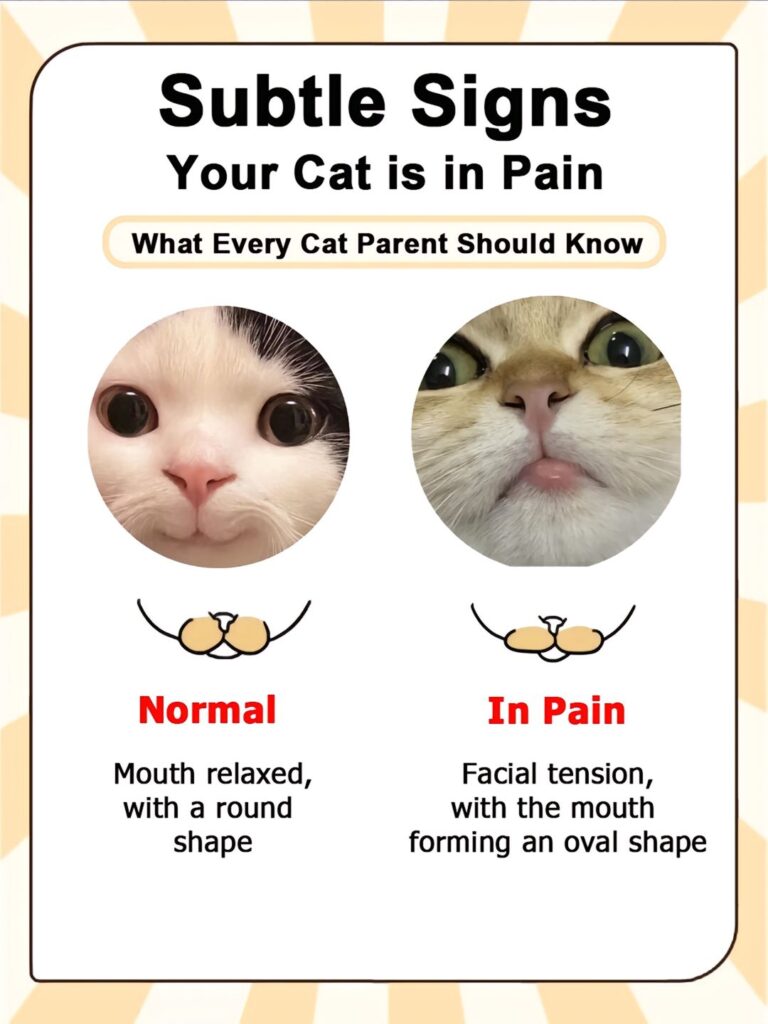
Is Your Cat in Pain? 6 Subtle Signs You Need to Watch Out For
Cats are known for their independent nature, but sometimes their silent struggles can be easy to overlook. As cat owners, we’re always looking out for the signs that our feline friends are healthy, happy, and comfortable. However, when they’re in pain, cats often mask their discomfort, making it tricky for us to tell when something’s wrong. Fortunately, there are subtle signs to look out for that can indicate your cat is in pain. Here’s how to decode their expressions and body language to ensure your cat’s well-being.
1. Eyes: Squinting and Lethargy vs. Wide and Alert
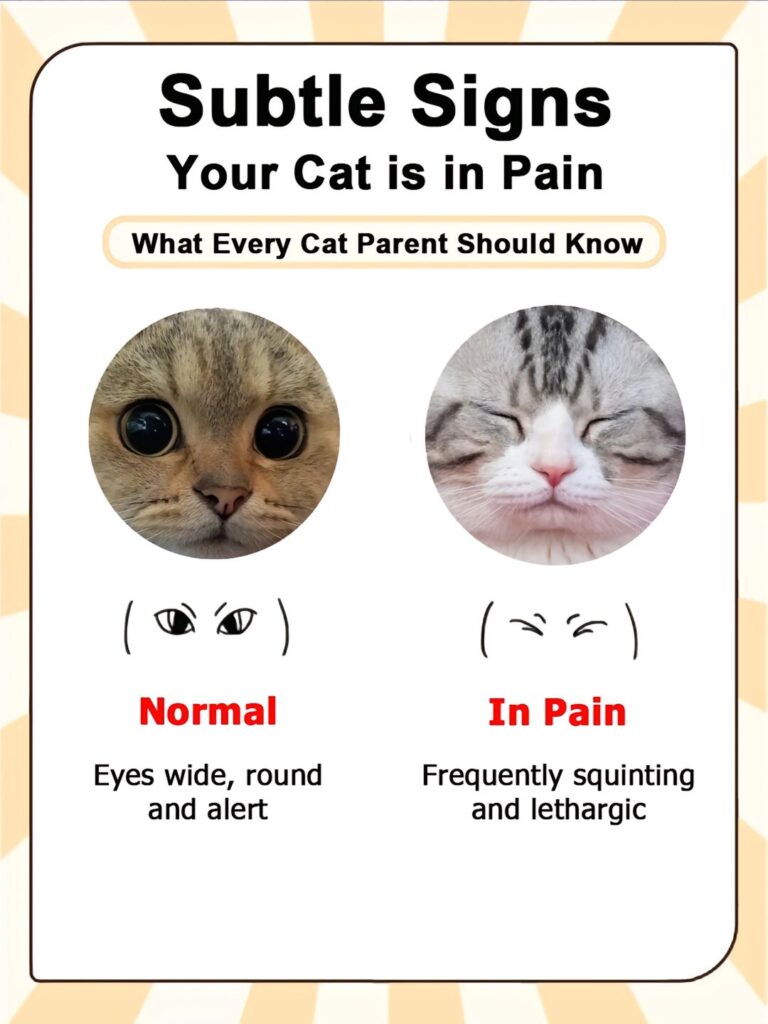
One of the most telling signs that a cat is in pain is a change in their eye expressions. Normally, a cat’s eyes are wide, round, and alert, reflecting curiosity or interest in their surroundings. However, when a cat is in pain, you may notice them frequently squinting, with their eyes half-closed, or they may appear lethargic. This change in eye shape and behavior can indicate that your cat is feeling discomfort or distress.
What it Means: Squinting and sluggishness are often a response to physical pain, and if you notice these signs, it’s time to monitor your cat’s behavior closely. A vet visit may be necessary to pinpoint the cause of the pain.
2. Ears: Pinned Back in Response to Silent Pain
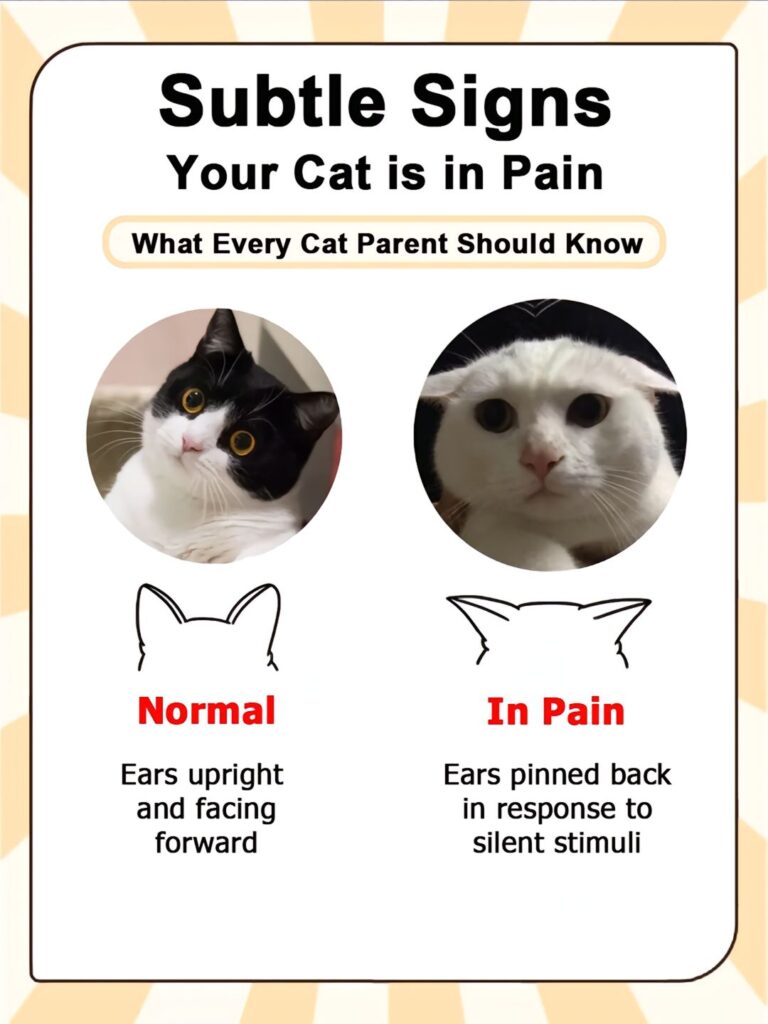
Cats’ ears are incredibly expressive, and their position can reveal how they are feeling. When your cat is healthy and comfortable, their ears are upright, facing forward, and they remain relaxed. But when a cat is experiencing pain, their ears may be pinned back or turned sideways, a reaction to silent stimuli or an invisible threat. This could be due to headaches, ear infections, or injuries.
What it Means: If your cat’s ears are consistently flattened or turned in unusual directions, they may be signaling discomfort. This could point to something as minor as ear mites or as serious as internal injury, so it’s important to investigate further.
3. Whiskers: Tension vs. Relaxation

Whiskers are another indicator of a cat’s emotional state. A cat with relaxed, naturally curved whiskers is typically in a calm and comfortable state. However, when a cat is in pain, you might notice their whiskers standing straight and forward, away from their face. This is a common response to physical or emotional distress, as they try to gauge their environment or react to discomfort.
What it Means: Whiskers pushed forward are an instinctual reaction, signaling that your cat is feeling threatened or in pain. Keep an eye on your cat’s whisker movements, as they can give you crucial clues about their health.
4. Mouth: Tension vs. Relaxation

Take note of your cat’s mouth expression. When a cat is in pain, their face may appear tense, and their mouth may shift into an oval shape. This facial tension is often paired with other signs of distress, such as drooling or an inability to eat. On the other hand, a relaxed cat has a soft, round mouth, indicating that they’re calm and comfortable.
What it Means: A tight mouth with a noticeable oval shape can signal that your cat is experiencing pain, possibly from dental issues, oral discomfort, or internal health problems. It’s important to consult a vet to determine if there’s an underlying cause.
5. Head Position: Natural vs. Drooping
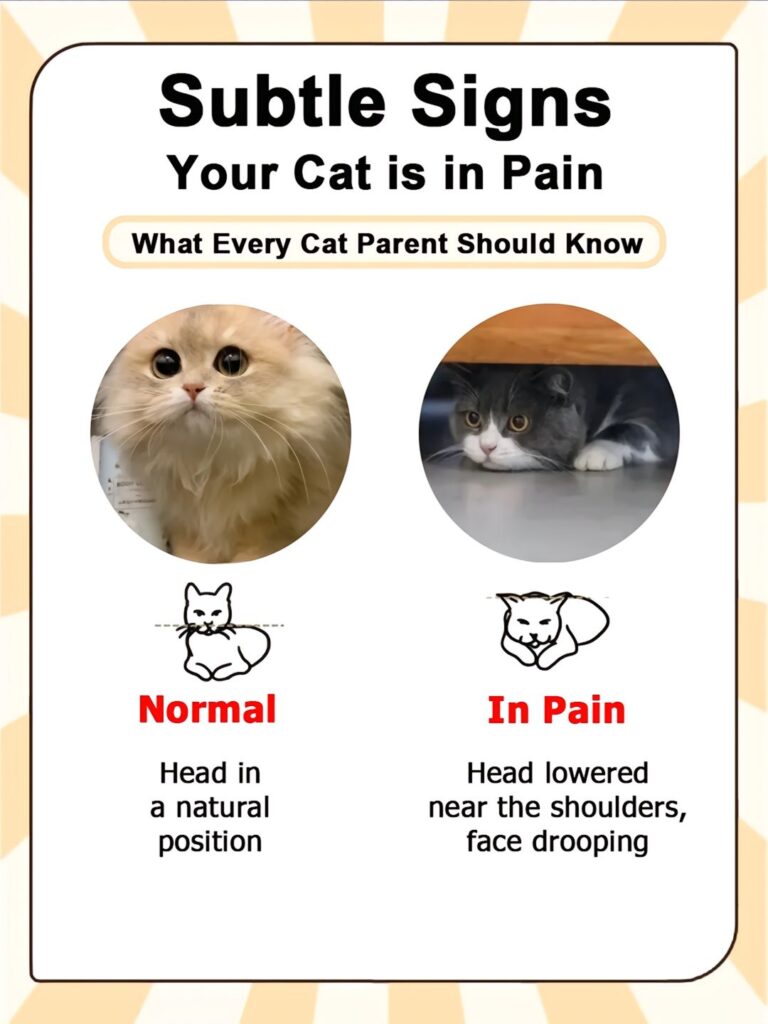
A healthy cat holds their head in a natural, upright position. However, a cat in pain may exhibit a lowered head, often bringing it closer to their shoulders and showing signs of facial drooping. This posture indicates that they may be struggling to keep their head up due to discomfort, possibly from neck pain, headaches, or other underlying medical conditions.
What it Means: A drooping head is a major sign of distress, and it should not be ignored. If you notice this posture frequently, it’s crucial to take your cat to the vet as it may point to a more serious health issue.
Why Understanding These Signs is Crucial for Your Cat’s Health
Cats are incredibly good at hiding their pain, but paying attention to these subtle signs can help you catch potential problems early. Recognizing changes in their eye expressions, ear positions, whisker movements, mouth shapes, and head posture is key to understanding what your cat is going through. By identifying these signs of pain early, you can ensure that your cat gets the proper treatment and relief they need to feel better.
Taking immediate action when you suspect your cat is in pain will not only improve their quality of life but can also prevent serious health issues from worsening. As a responsible cat owner, staying aware of these signals will allow you to be the best caregiver and advocate for your furry friend.
Share this guide with fellow cat parents so that we can all stay vigilant in understanding our cats’ needs. Remember, early intervention can make all the difference in ensuring your cat lives a happy, pain-free life. 🐾💛
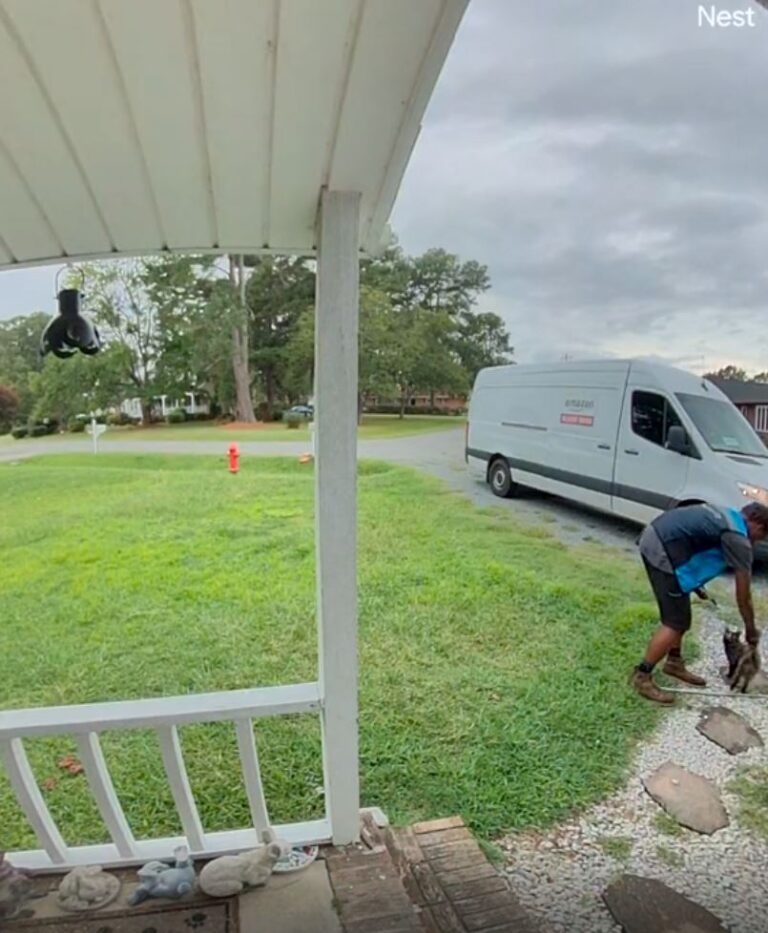






So adorable
Thank you so much ❤❤❤
My cat started biting me on my hand and at the same time his eyes changed like he dared me punish him. He brought blood on my hands. I had no idea he was in pain but I see by these pictures he must of been in a lot of pain. I took him to the vet twice but he thought he had Hair Ball problems. He bathed a lot and I just thought he wanted to be clean. He was not a long haired cat. He got so bad because he could not swallow his food that I finally had to put him down. Broke my heart!!!